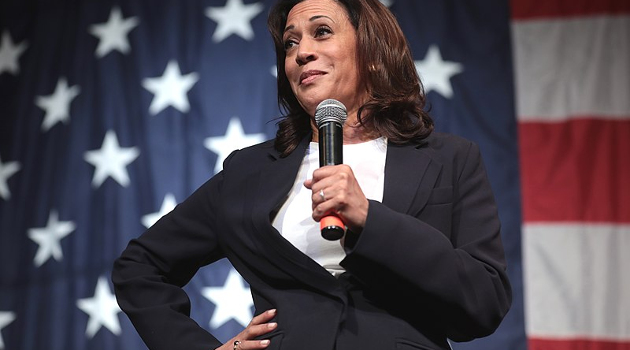Originally published by The Blaze on September 3, 2024.
Kamala Harris’ grand reveal of her economic plan turned into an epic campaign flop. She faces the unenviable task of trying to distance herself from Joe Biden’s deeply unpopular presidency and its catastrophic economic legacy, without admitting that the administration, in which she has played a key role, failed in its economic stewardship. This is a nearly impossible task, and she has now clearly flunked it.
In her speech in North Carolina fresh off the Democratic National Convention, Harris tried to show sympathy for the daily economic struggles of American families. She admitted that prices are “too high” and that basic expenses — food, rent, gas, school supplies, and medication — are leaving many with “not much … at the end of the month.”
Harris is not just endorsing Biden’s economic framework but accelerating it.
In what might seem a startling acknowledgement for a sitting vice president given its implications, she noted, “A loaf of bread costs 50% more today than it did before the pandemic. Ground beef is up almost 50%.”
What she didn’t acknowledge was the role that Biden-Harris administration policies played in getting us here. Her call to “chart a new way forward” offers anything but, and instead represents a full-throated embrace of “Bidenomics” — the very agenda that has contributed to soaring consumer costs and the struggles of middle-class families.
At its core, Bidenomics shifts blame for economic distress onto others, deliberately ignoring the role that massive government spending and burdensome regulations have played in causing economic stagnation, inflation, and high interest rates.
Harris escalated this scapegoating tactic with her recent remarks, revealing that she is not just endorsing Biden’s economic framework but accelerating it.
She first attacked food companies for “price gouging,” promising to impose the “first-ever federal ban on price-gouging on food and groceries.” If enacted, this policy would allow bureaucrats to decide whether the cost of hamburger meat or a loaf of bread is too high and to impose politically motivated prices instead of those based on real market conditions like supply and demand. She did not mention the various socialist regimes that have tried and failed to implement similar pricing structures, all of which led to breadlines. One only needs to look at Venezuela to see their impact in real time.
Second, Harris attacked property owners, blaming landlords for the rent prices that increased since she took office. Her prescription for this? Government-mandated rent control nationwide, despite this policy’s 50-year legacy of failure.
She also targeted software companies that use algorithms to help calculate prices, pledging to push for a law that “cracks down” on the use of such software to inform property owners of current market conditions. Proponents of policies based on the assumption that market participants have too much information about relevant economic conditions are either horrifically misguided, seeking to hide some unflattering economic reality for which they are likely responsible, or both. There is no serious case for blaming high rent prices on software.
Thankfully, Harris’ speech has not been well-received. Even typically supportive media outlets have shown skepticism.
CNN warned that her plan “could create more problems than it solves.” The Washington Post editorial board stated, “The times demand serious economic ideas. Harris supplied gimmicks.” The editorial further noted, “‘Price gouging’ is not causing inflation. So why is the vice president promising to stamp it out?”
Harris may claim she wants to lead the country in a new direction, but she is proposing the same command-and-control approach with updated talking points and a fresher marketing package. She doesn’t want to change Biden’s agenda — she aims to expand it, adding more government burdens, debt, and red tape for the American people. More of these same policies would only bring more of the same misery for Americans.
———
Image credit: Gage Skidmore | CC BY-SA 2.0.

